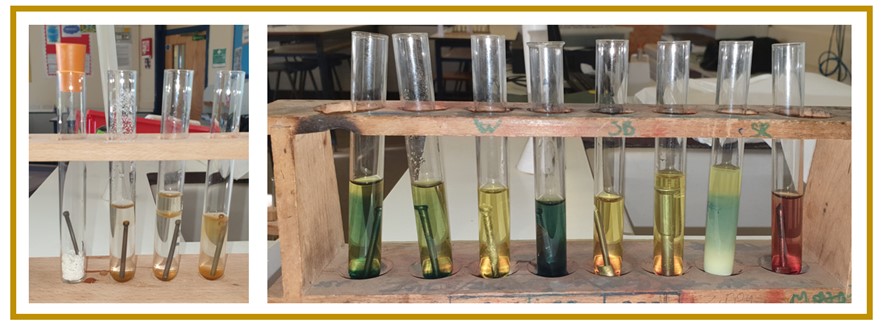KS4 Chemistry Club - Rust!
At the start of this Spring term, Chemistry Club students set up an experiment to investigate what conditions are needed for the familiar process of rusting. In this practical, students put iron nails in various conditions, including wet, dry, air-free and salty, and left them for a week. From their results they concluded that water and oxygen are essential for rusting, and salt can increase the rate of rusting.
The following week, students undertook a very simple experiment to test and assess a variety of methods for preventing rust. Students protected iron nails using painting, greasing and sacrificial protection (wrapping magnesium/copper metals around the iron nail). The nails were placed in test tubes and covered with corrosion indicator solution. After a few minutes, students could see the indicator changing from the starting yellow colour to dark blue patches on the nails. These dark blue patches indicated areas where rusting was starting. At the end of the experiment, students could appreciate the effectiveness of the usual rust prevention methods, such as painting and greasing. They were particularly fascinated about the sacrificial protection of iron – the nail wrapped in magnesium (more reactive than iron) did not corrode – it ‘sacrificed’ itself! This method is used commercially to protect iron structures, ships, bridges and underwater pipelines.
Chemistry Club is open to all students in Years 9, 10 and 11 and takes place every Thursday lunchtime from 1.30pm in S4 - Mrs Arain



